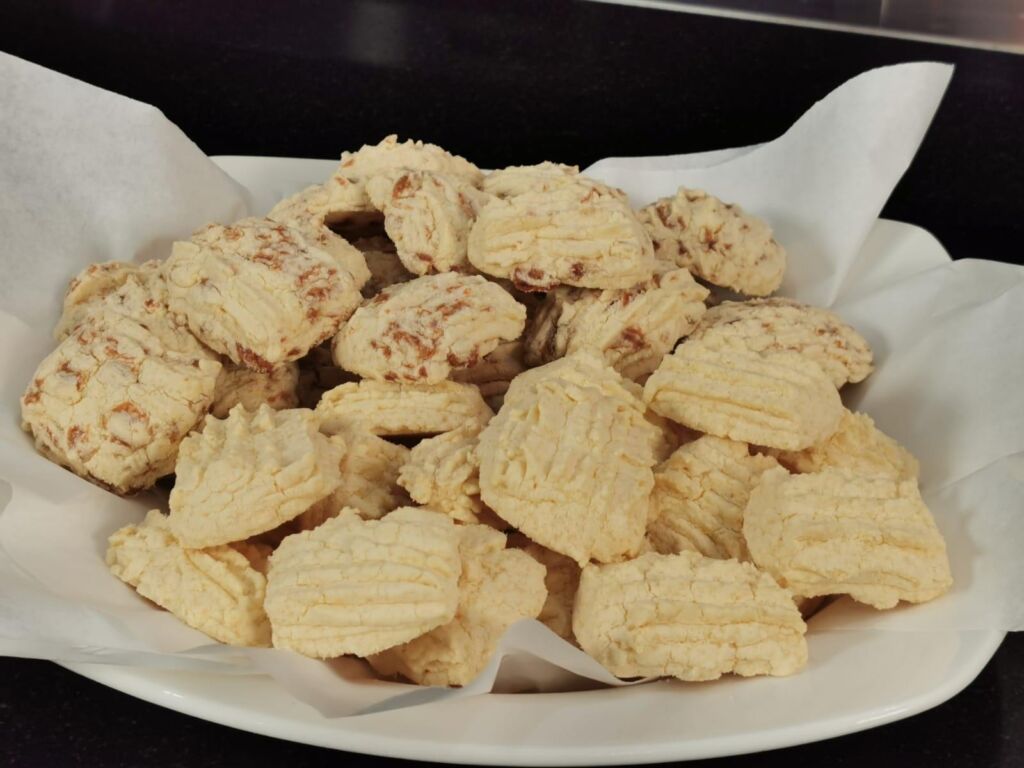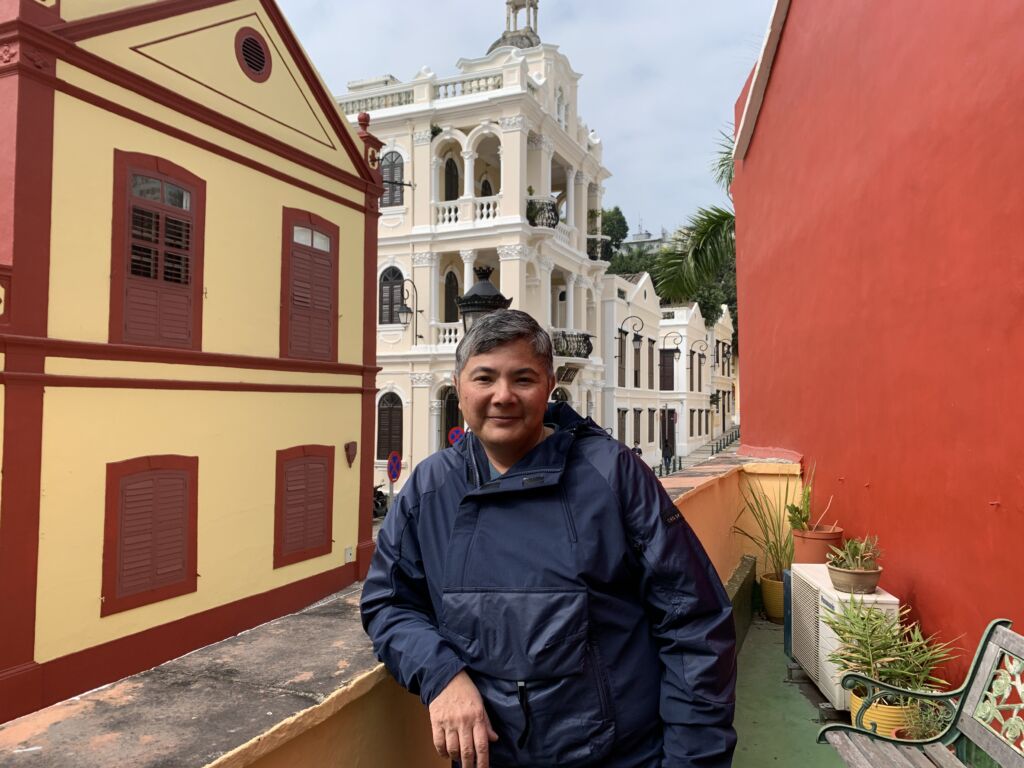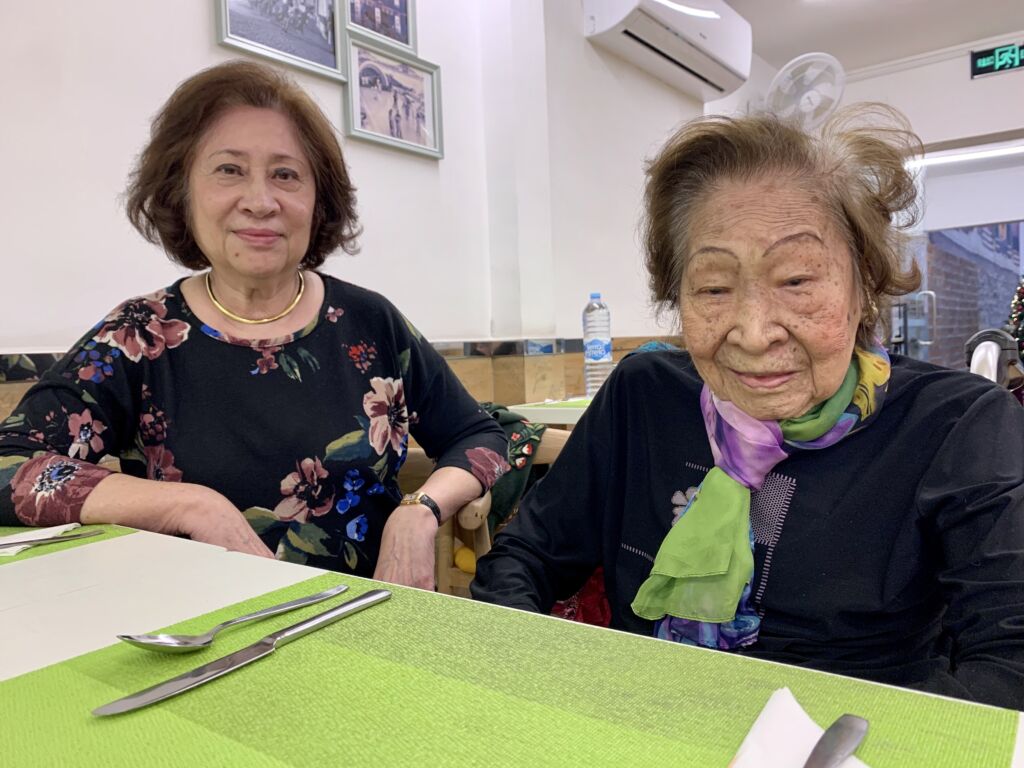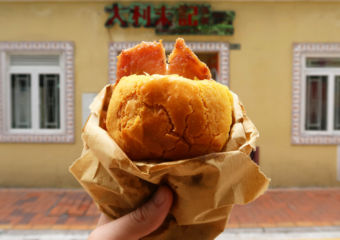The fast-paced glittery city we know today hasn’t always been like this. If you ever read a Senna Fernandes novel then you’ve experienced time travel to a distant world in which two cities converged: the Chinese city and the Christian city. This festive season, we wanted to learn more about Macanese Christmas traditions and how the community used to celebrate Christmas in days bygone. But first, what does it actually mean to be a Macanese? While settling in the territory, many Portuguese traders married local Chinese women. The offspring of these unions bred a new and distinctive culture, including rich gastronomy as well as a language (Patuá). The Macanese are the Macau people of mixed Sino Portuguese ancestry.
Macanese Christmas Traditions
The overwhelming majority of the Macanese are Christian and therefore Christmas is one of the most important celebrations of the year for the community. For the bigger part of the 20th century, it wasn’t common to find Christmas decorations in the streets and the holiday didn’t have such a remarkable impact on commerce. Instead, it was acknowledged as a time to be at home with family, share home-cooked meals, and attend Midnight Mass, perhaps the most cherished of the Christmas rites, which usually includes biblical readings on Christ’s birth and festive carols. In some households, following an ancient Roman Catholic tradition of abstaining from eating meat, dinner on Christmas Eve was a rather simple meal comprised of a slightly sweet fish pie and lacassá (a soup made of rice vermicelli and shrimp).
Every year, Macanese families make their way to churches to attend this service. After the late-night mass, adults and sleepy children headed back home to enjoy the Christmas supper, no less than a feast showcasing the highlights of the Macanese cuisine. For some, this was the high point of the whole Christmas celebrations. During this supper, an interesting intersection of two cultures took place, with some people lighting up red firecrackers by the doorstep to celebrate the Nativity. Between Christmas Day and the Twelfth Night, members of the community visited extended family and friends, exchanging greetings and best wishes, oftentimes gifting the kids with presents.
Also read: Patua Macanese Creoule Facing Extinction

Macanese Christmas Food
Needless to say, much of the celebration took place around the dining table while joyfully sharing a special meal, talking loudly, telling stories, and laughing. Matriarchs made sure everything looked perfect: fine Canton porcelain, hand-embroidered linen tablecloths, and a nativity set, preferred over Christmas trees. The Macanese approach to hosting presupposes a sumptuous spread of multiple savory and sweet dishes to be shared without any rush. Tacho, the Macanese version of the Portuguese Cozido (a popular dish which consists of different cuts of boiled meats, cured meats, and vegetables) is without a doubt one the most treasured fares of the region’s gastronomy and the one to take center table at Christmas. Rich, average, and struggling families had tacho since it is easy to adapt to one’s budget. It can be prepared with plenty of lesser meats, less or plentiful vegetables. Besides tacho, several families claim having lamb, stuffed turkey, or even diabo, a stew made out of leftover meats cooked along with char siu, potatoes, tomatoes, ginger, and Chinese pickles. Naturally, a feast isn’t complete without plentiful sweets. Alua (made with coconut milk, rice flour, pine nuts, and almonds), Christmas cake (a moist cake made with dried fruits, nuts, and Port wine), genete (corn-starch biscuits), coscorões (a sweet fried dough sprinkled with sugar metaphorically referred to as baby Jesus’ blanket) and angel’s hair were some of the highlights in the rich showcase.
We spoke to three members within the community to learn more about Macanese Christmas traditions and food: Chef Neta Manhão, Chef Ana Manhão and Sónia Palmer, daughter of Aida de Jesus–the owner of the famous Riquexo restaurant.
Also read: Eat Like a Local: Ultimate Macanese Must-Try Dishes

Chef Neta Manhão at her cooking studio in St. Lazarus district
Christmas at Neta Manhão’s family home
For the Christmas Eve family gathering the main dish was usually boiled codfish with cabbage, potatoes, and beans (“caldeirada” in Portuguese), Chef Neta shares. To this day, this is still what the Manhão family has for dinner on the 24th of December, a clear inheritance of the Portuguese ways. “It is relatively easy to cook and that makes it perfect for December 24th, probably the most labor-intensive day of the year”. During her childhood, the celebration took in around 30 family members and that didn’t even include the whole family.
Chicken noodle soup, lacassá, tacho, empada de peixe (fish pie), genete, alua and Christmas cake were all part of the Christmas essentials. Chef Neta recalls how her grandmother used to prepare the Christmas cake one year in advance. “This was possible because she used a lot of Port wine that acted as a preservative. It tasted wonderful. The earlier it was prepared the deeper and richer the flavors became”. On the 25th, Christmas Day, lunch wouldn’t be complete without roasted lamb leg and stuffed turkey. After lunch, people would leave the house to visit and greet extended family and friends.
Chef Neta holds dear memories of Christmas during her childhood, especially the joy of a family reunion and her grandmother and mother’s devotion to family, displayed through the universal act of love that is preparing a meal for all to delight in. Back then children were kept out of the kitchen. “It was too busy!” she explains. “We were expected to do one thing and that was simply to play outside!”. After the passing of her mother and grandmother, the responsibility of cooking during Christmas now falls upon Chef Neta, who gladly takes it on with the help of her aunts. The Macanese chef does her utmost to recreate the tradition she was witness to as a child. “It is paramount for the youngest generation to know our culture and that is why I need to do Christmas the same way as my mother and grandmother before, keep the tradition alive”.
Chef Neta Manhão holds cooking classes at her Neta Club located in the charming St. Lazarus district. She also caters Macanese food faves and uses the space as a private kitchen.
Neta Club 2 Calçada Da Igreja De S.Lázaro, R/C, Macau, +853 6685 5889, [email protected]
Also read: Antonieta Manhão: The Macanese Chef Spreading the Word

Aida de Jesus and daughter Sonia Palmer
Christmas at de Jesus’ Family home
Like most Macanese ladies, the late owner of the famous restaurant Riquexo, Dona Aida de Jesus, learned how to cook by cooking. There was no recipe book to turn to, all she could rely on was palate, scents, and the fond memories of the taste of her own mother’s food. There was the occasional scrapped sheet with notes on a recipe however those were meant to be handled by someone well versed on the subject, containing scarce directions and ambiguous quantities for ingredients, such as “20 cents worth of” or “a handful of”. Her daughter Sónia managed to get her to write down a few recipes in an easy to interpret manner. “In order to preserve our culture documenting and sharing recipes is crucial. We make it a point to share them with whoever requests so” she adds, recalling the story of an American gentleman who openly asked for a number of Riquexo signature recipes to include on the menu of his set to open a restaurant in the US. Aida de Jesus was happy to hand them out and the restaurant came to be quite a hit. “Macanese gastronomy might well be the first fusion gastronomy to ever exist. Along with Patuá (Macanese language), the Macanese food is one of the most important aspects of our culture” Sónia affirms.
Christmas Eve is the main event at de Jesus’ family and it has been like this since Sónia can remember. During her childhood, her mother (who passed at 105 years old) used to cook sweet and savory dishes to fill up a table, as Macanese tradition requires. “We did have codfish as a way of honoring Portuguese traditions, however, tacho was definitely the main dish everyone looked most forward to having”. Besides tacho and codfish, suckling pig, aluar, genete, fish pie and coscorões were also on the menu for the most important celebration of the year. Like most, the family attended the Midnight Mass. “We attended service at the Macau Cathedral or St. Anthony’s Church”.
Since everyone slept in the next day, lunch on the 25th was basically leftovers but reinvented: diabo (which means devil in Portuguese). “I’ve tried to found out why people decided to call it Diabo but no one seemed to know why!” Sónia jokes. On Christmas Day the family spent the afternoon visiting friends and family. Due to this common tradition of visiting loved ones on the 25th, many families would set up a Cha Gordo (which translates to “fat tea”), a unique Macanese tradition, to welcome visitors over tea and countless delicacies.
Riquexó 69 Av. de Sidonio Pais, Macau, +853 2856 5655, www.facebook.com/Riquexo
Also read: Riquexó: The City’s Trove of Macanese Cuisine

Christmas at Ana Manhão’s family home
Owner of Macanese restaurant Belos Tempos, Chef Ana Manhão points that “Along with Easter, Christmas was one of the most important celebrations in the year” and the one kids looked most forward to. “Back then, we didn’t get presents throughout the year, presents were a Christmas thing only. Some years on Christmas morning, if I’d been really good, my mother would urge me to go check under my bed if Santa Claus had left a present for me” she joyfully recalls. “But that didn’t happen every year!!” she laughs. Ana told us how she used to spend days leading up to the holiday in the kitchen helping out her mother with the cooking and baking. She jokes that she was never one to refuse food “There was a lot of taste testing in addition to finishing up with any scraps left in bowls before washing them up, I was thrilled to help with that!”. One of four kids, she was the only sibling to take part in preparing food for the event.
Christmas supper after Midnight Mass and lunch on December 25th were the main events for the family and unsurprisingly the main dish was tacho, in addition to stuffed turkey and roasted lamb. “There were 12 uncles and aunts, plus my siblings and cousins, more than 20 of us would gather to celebrate Christmas at my grandmother’s house, which at the time was located at Rua de Venceslau de Moraes. We would to everything at home from scratch”. The sweets served included all the classic staples, from milk bebinca and baji rice pudding to angel’s hair (“cabelos de noiva” in Portuguese), ladu (a sweet sprinkled with white bean powder) and coscorões. Her favorite sweets of the season are genetes and the Christmas cake, or rum cake.
Nowadays Chef Ana takes great pleasure in keeping these traditions alive and putting together a proper celebration for her family. She’s a mother to three boys and has joyfully been promoted to grandmother. “Sometimes my sons worry that it might be too much work for me but I do it with all my love and doing it for my family makes me so content! I always tell everybody: let your mothers do these things for you, it brings them great happiness” she stresses.
Belos Tempos 10 Rua da Felicidade, Macau, +853 2893 8670, www.facebook.com/belostempos
Also read: Belos Tempos Restaurant: The Real Macanese Deal




































